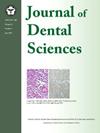Impact of orthodontic education on the perception of attractiveness and acceptance of facial profiles in adult Taiwanese and Caucasian women
IF 3.1
3区 医学
Q1 DENTISTRY, ORAL SURGERY & MEDICINE
引用次数: 0
Abstract
Background/purpose
The labiomental angle is a critical indicator of lower facial harmony and esthetics. This study investigated the impact of labiomental angle variations on facial attractiveness and examined how orthodontic education influenced aesthetic perception among dental students. Specifically, it evaluated the perceived attractiveness and acceptance of varying labiomental angles in Taiwanese and Caucasian women, aiming to explore potential cultural and educational effects on esthetic preferences.
Materials and methods
Three-dimensional facial scans of one Taiwanese and one Caucasian adult female were digitally modified to generate eight labiomental angle variations (117°–152°, at 5° intervals). Each variation included five images and one video, resulting in 16 sets. Eighty-eight dental students assessed these images before and after attending orthodontic lectures. Attractiveness was evaluated using a Visual Analog Scale (VAS), while acceptance was rated on a 3-point Likert scale. The null hypothesis proposed no significant difference in students’ perception of attractiveness and acceptance between the two ethnic profiles.
Results
Before the lectures, the most attractive labiomental angle for the Taiwanese female was 137°, shifting to 147° after the lectures. For the Caucasian female, 117° remained the most attractive before and after the lectures. In terms of acceptance, the most preferred angles were 137° for the Taiwanese and 117° for the Caucasian profile. These differences were statistically significant, leading to rejection of the null hypothesis.
Conclusion
Cultural background, ethnicity, and orthodontic education significantly influenced students' perceptions of labiomental esthetics, emphasizing the value of education in shaping aesthetic standards.
正畸教育对台湾及白种人成年女性对面部轮廓的吸引力及接受度之影响
背景/目的阴唇角是衡量下面部和谐与美观的重要指标。本研究探讨唇部角度变化对口腔学生面部吸引力的影响,并探讨正畸教育对口腔学生审美认知的影响。具体而言,本研究评估了台湾和高加索女性对不同唇形角度的感知吸引力和接受度,旨在探讨文化和教育对审美偏好的潜在影响。材料和方法对1名台湾和1名高加索成年女性的三维面部扫描进行数字修改,生成8个唇部角度变化(117°-152°,间隔5°)。每个版本包括五张图片和一段视频,共16组。88名牙科学生在参加正畸讲座前后评估了这些图像。吸引力是用视觉模拟量表(VAS)来评估的,而接受度是用3分李克特量表来评估的。零假设表明,两种种族的学生对吸引力和接受度的感知没有显著差异。结果讲座前台湾女性最具吸引力的唇角为137°,讲座后为147°。对于白人女性来说,在讲座前后,117°仍然是最具吸引力的。在接受度方面,台湾人最喜欢的角度是137°,高加索人最喜欢117°。这些差异在统计上是显著的,导致拒绝原假设。结论文化背景、种族和正畸教育对学生的唇形美学观有显著影响,强调了教育在塑造审美标准方面的价值。
本文章由计算机程序翻译,如有差异,请以英文原文为准。
求助全文
约1分钟内获得全文
求助全文
来源期刊

Journal of Dental Sciences
医学-牙科与口腔外科
CiteScore
5.10
自引率
14.30%
发文量
348
审稿时长
6 days
期刊介绍:
he Journal of Dental Sciences (JDS), published quarterly, is the official and open access publication of the Association for Dental Sciences of the Republic of China (ADS-ROC). The precedent journal of the JDS is the Chinese Dental Journal (CDJ) which had already been covered by MEDLINE in 1988. As the CDJ continued to prove its importance in the region, the ADS-ROC decided to move to the international community by publishing an English journal. Hence, the birth of the JDS in 2006. The JDS is indexed in the SCI Expanded since 2008. It is also indexed in Scopus, and EMCare, ScienceDirect, SIIC Data Bases.
The topics covered by the JDS include all fields of basic and clinical dentistry. Some manuscripts focusing on the study of certain endemic diseases such as dental caries and periodontal diseases in particular regions of any country as well as oral pre-cancers, oral cancers, and oral submucous fibrosis related to betel nut chewing habit are also considered for publication. Besides, the JDS also publishes articles about the efficacy of a new treatment modality on oral verrucous hyperplasia or early oral squamous cell carcinoma.
 求助内容:
求助内容: 应助结果提醒方式:
应助结果提醒方式:


